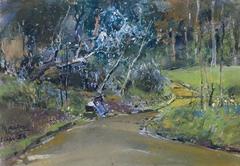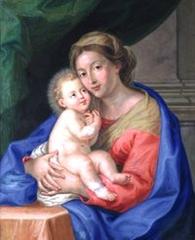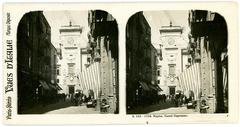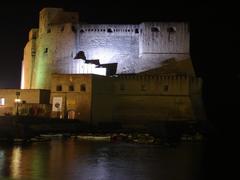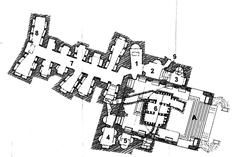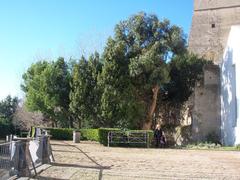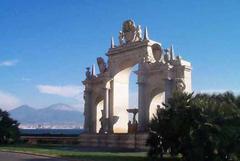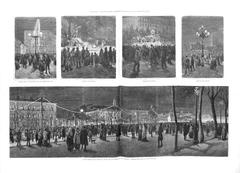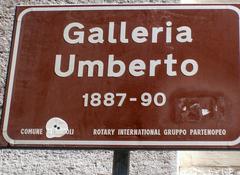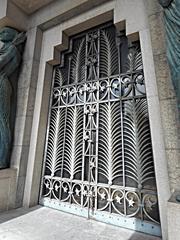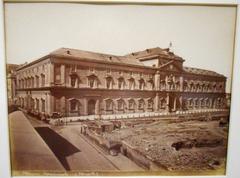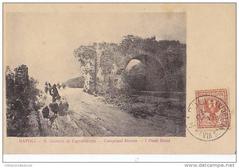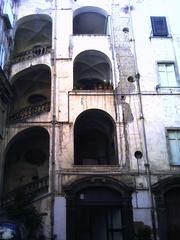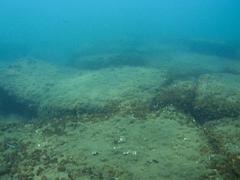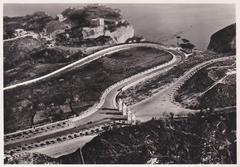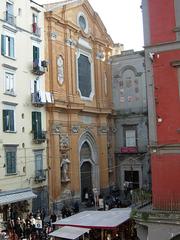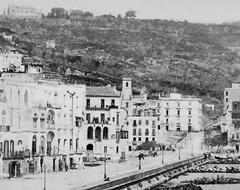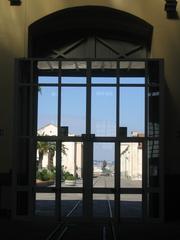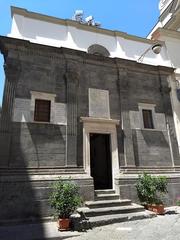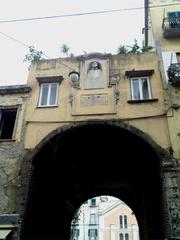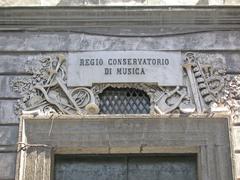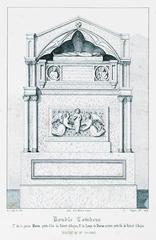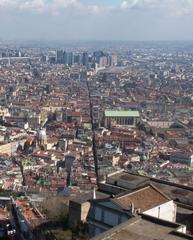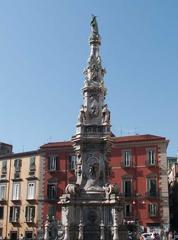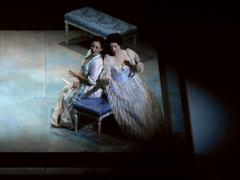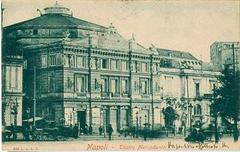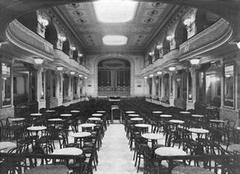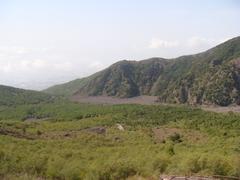Comprehensive Guide to Visiting Busto di Pulcinella, Naples, Italy
Date: 19/07/2024
Introduction
The Busto di Pulcinella in Naples, Italy, is more than just a statue; it is a profound symbol of Neapolitan culture and heritage. Situated in the heart of Naples’ historic center, this bronze bust of Pulcinella, a beloved character from the traditional Italian commedia dell’arte, captures the essence of Neapolitan identity, combining wit, humor, and resilience. Pulcinella, with his distinctive mask and hunchback, has been a cultural icon since the 16th century, representing the spirit of Naples (Visit Naples). This guide aims to provide comprehensive information about the Busto di Pulcinella, including its history, cultural significance, visitor tips, and more. Whether you’re a history enthusiast, an art lover, or a curious traveler, this iconic monument offers a unique glimpse into the rich cultural tapestry of Naples.
Table of Contents
- Introduction
- Origins and Creation
- Cultural Significance
- Location and Accessibility
- Visitor Information
- Restoration and Preservation
- Visitor Experience
- Legends and Myths
- Influence on Modern Culture
- Educational Value
- Community Engagement
- Future Prospects
- FAQ
- Conclusion
Origins and Creation
The Busto di Pulcinella, a bust of the iconic Neapolitan character Pulcinella, is a significant cultural artifact located in Naples, Italy. Pulcinella, a character from the commedia dell’arte, originated in the 16th century and has since become a symbol of Neapolitan culture. The bust itself is believed to have been created in the 18th century, during a period when Pulcinella’s popularity was at its peak. The character of Pulcinella is known for his distinctive mask, hunchback, and mischievous personality, which have been immortalized in various forms of art, including this bust.
Cultural Significance
Pulcinella is more than just a theatrical character; he embodies the spirit of Naples. The character’s traits—cunning, wit, and resilience—reflect the qualities that Neapolitans pride themselves on. The Busto di Pulcinella serves as a reminder of these cultural values and has become a popular attraction for both locals and tourists. The bust is often associated with good luck, and it is a common practice for visitors to touch it for good fortune.
Location and Accessibility
The Busto di Pulcinella is located in the historic center of Naples, specifically in the Spaccanapoli district. This area is known for its narrow streets, vibrant atmosphere, and rich history. The bust is situated near the Church of Santa Maria Maggiore, making it easily accessible for those exploring the historic sites of Naples. The location is also a UNESCO World Heritage site, adding to the significance of the bust. For those planning a visit, the bust is accessible throughout the day, and there is no entrance fee.
Visitor Information
- Visiting Hours: The Busto di Pulcinella is accessible 24/7, but the best time to visit is during daylight hours to fully appreciate the surrounding historical sites.
- Tickets: There is no entrance fee to visit the Busto di Pulcinella.
- How to Get There: The bust is easily reachable by public transport. The nearest metro station is Dante, and from there, it’s a short walk through the charming streets of Spaccanapoli.
- Nearby Attractions: While in the area, consider visiting other historical sites such as the Naples Cathedral, the Sansevero Chapel Museum, and the Church of Santa Maria Maggiore.
Restoration and Preservation
Over the years, the Busto di Pulcinella has undergone several restoration efforts to preserve its condition. The most recent restoration took place in 2019, funded by local cultural organizations and the city government. These efforts are crucial in maintaining the bust’s appearance and ensuring that it continues to be a symbol of Neapolitan culture for future generations. The restoration process involved cleaning the bust, repairing any damage, and applying protective coatings to prevent further deterioration.
Visitor Experience
Visitors to the Busto di Pulcinella can expect a unique cultural experience. The bust is often surrounded by street performers and vendors, adding to the lively atmosphere of the area. Many tourists take the opportunity to learn about the history of Pulcinella and the commedia dell’arte while visiting the bust. Guided tours are available, providing in-depth information about the character’s origins and significance. Additionally, the nearby shops and cafes offer a taste of local cuisine, making the visit even more enjoyable.
Legends and Myths
Several legends and myths are associated with the Busto di Pulcinella. One popular belief is that touching the bust’s nose brings good luck. This tradition has led to the nose being polished to a shine from the countless hands that have touched it over the years. Another legend suggests that Pulcinella can grant wishes, making the bust a focal point for those seeking fortune and success. These myths contribute to the bust’s allure and make it a must-visit attraction in Naples.
Influence on Modern Culture
The character of Pulcinella continues to influence modern culture, both in Naples and beyond. The Busto di Pulcinella serves as a reminder of the character’s enduring legacy. Pulcinella has appeared in various forms of media, including films, television shows, and literature. The character’s influence can also be seen in contemporary theater and street performances, where actors often portray Pulcinella’s distinctive traits. The bust itself has become a popular subject for artists and photographers, further cementing its place in modern culture.
Educational Value
The Busto di Pulcinella offers significant educational value for those interested in Italian culture and history. Schools and universities often organize field trips to the bust, providing students with an opportunity to learn about the commedia dell’arte and its impact on Italian theater. The bust also serves as a case study for art and history students, who can analyze its artistic features and historical context. Educational materials and resources are available at nearby museums and cultural centers, enhancing the learning experience.
Community Engagement
The Busto di Pulcinella plays a vital role in community engagement in Naples. Local organizations often host events and festivals centered around the bust, celebrating Neapolitan culture and traditions. These events attract both locals and tourists, fostering a sense of community and cultural pride. The bust also serves as a meeting point for various cultural activities, including music performances, art exhibitions, and theatrical shows. Community involvement in the preservation and celebration of the bust ensures its continued relevance and significance.
Future Prospects
The future of the Busto di Pulcinella looks promising, with ongoing efforts to preserve and promote this cultural landmark. Plans are in place to enhance the visitor experience through interactive exhibits and digital guides. These initiatives aim to provide a more immersive and informative experience for tourists. Additionally, collaborations with international cultural organizations are being explored to raise awareness about the bust and its significance. The continued support from the local community and government ensures that the Busto di Pulcinella will remain a cherished symbol of Neapolitan culture for years to come.
FAQ
- What are the visiting hours for the Busto di Pulcinella? The bust is accessible 24/7, but daytime visits are recommended.
- Is there an entrance fee for the Busto di Pulcinella? No, there is no entrance fee.
- How do I get to the Busto di Pulcinella? The nearest metro station is Dante, and from there, it’s a short walk through the Spaccanapoli district.
- Are there guided tours available? Yes, guided tours are available and provide in-depth information about Pulcinella and the commedia dell’arte.
- What nearby attractions can I visit? Nearby attractions include the Naples Cathedral, Sansevero Chapel Museum, and the Church of Santa Maria Maggiore.
Conclusion
The Busto di Pulcinella stands as a poignant reminder of Naples’ rich cultural heritage. Whether you’re a history buff, a lover of the arts, or simply a curious traveler, this iconic bust offers something for everyone. Be sure to include it in your Naples itinerary for a memorable and enriching experience. For more detailed information, you can visit the official Naples tourism website.
References
- Visit Naples. Discover the Busto di Pulcinella - History, Significance, and Visitor Information in Naples. https://www.visitnaples.eu/en/neapolitanity/discover-naples/the-bust-of-pulcinella-in-naples-history-and-curiosities
